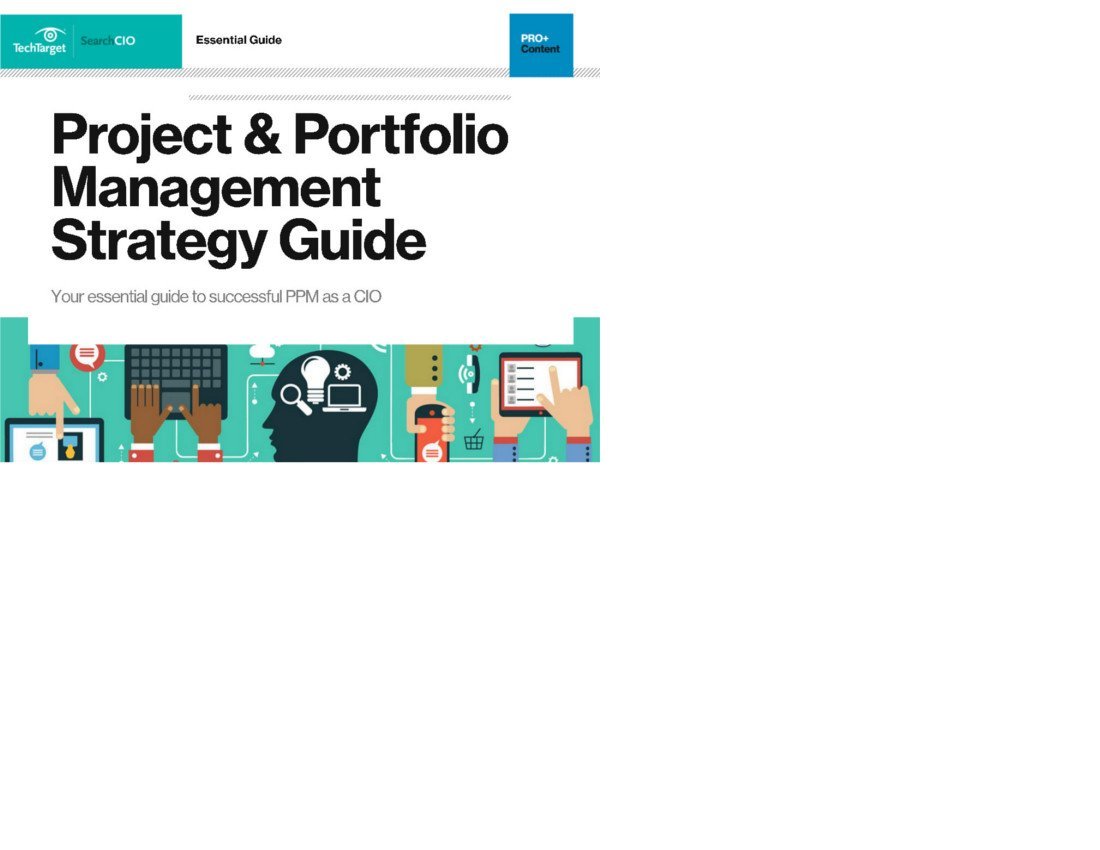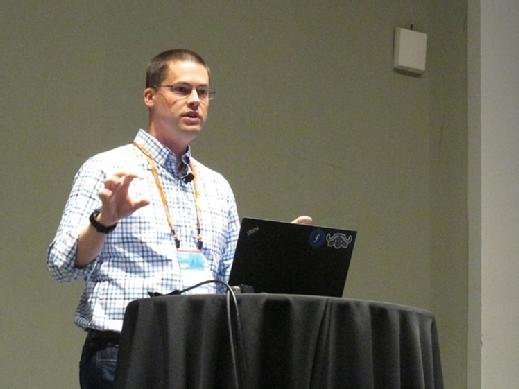Don’t let impostor syndrome hold you back- Valutrics
When Major Hayden started at cloud services company Rackspace, he was an “entry-level Linux tech,” who would answer help desk tickets and resolve issues. Then after a series of moves into middle management and software development and back again, he was promoted to the business side of the house, in the corporate security department.



Claim your complimentary copy of SearchCIO.com’s guide to improving project management efficiency
Looking to establish accountability across disparate project teams? Trying to automate processes or allow for lean methodology support? Hoping to enable business consequence modeling or real-time reporting? If you answered ‘yes’ to any of these questions, then you need to download this comprehensive, 68-page PDF guide on selecting, managing, and tracking IT projects for superior service delivery.
“I felt like a fish out of water,” said Hayden, now principal architect at Rackspace, at the recent OpenStack Summit in Boston. He went from being a T-shirt wearing programmer to “button shirts, Harvard Business Review and chairing meetings.”
Hayden had what’s called impostor syndrome – despite having the skills to do his job, he was dogged by the overwhelming feeling that he was a fake.
Hayden is in good company. An estimated 70% of people will have at least one bout of impostor syndrome in their lives, according to the Behavioral Science Research Institute. People the likes of authors John Steinbeck and Maya Angelou, actor Tom Hanks and Facebook COO Sheryl Sandberg all have felt like frauds at times.
If they can come down with impostor syndrome, chances are good that CIOs can, too. Especially as they mingle with business folks to push ever-critical digital business initiatives, IT leaders need to recognize this personality trait in themselves — and those they direct — and work to counter its effects. If not, they risk letting impostor syndrome impede the path to career success, discouraging people from pushing their limits — and, as Hayden stressed in his talk, driving “diversity away from your community.”
Hayden was talking to an audience of software developers and system admins who work on OpenStack, submitting code and issuing tweaks to the open source software platform. But impostor syndrome can affect people “no matter your age, your race, your gender, where you come from, what you work on, your experience level in anything.”

‘A pain in my butt’
The Behavioral Science Research Institute cites several researchers’ definitions of impostor syndrome, the simplest being an “internal experience of intellectual phoniness.” People who have it experience fears that hinder “a person’s ability to accept and enjoy their abilities and achievements, and have a negative impact on their psychological well-being.”
Hayden’s inability to adjust to his new business-level role caught the attention of his boss, who talked to him about two types of people: those with high confidence and low skills — “they just feel like they can do everything, but they usually make a mess,” Hayden said — and highly competent people who doubt themselves. Hayden, of course, was in the latter group. To his boss, both types were “a pain in my butt.”
“He wanted people whose confidence and competence were matched up, because it gave him an idea of exactly the team he had built, who he needed to hire for, if he needed to move people, transfer them, promote them,” Hayden said. “Without that, he was lost.”
Virtuous cycle
Hayden has a process for making sure your degrees of confidence and competence are aligned: the OODA loop. It’s a decision-making process — observe, orient, decide and act — originally developed for Air Force fighter pilots in the Korean War who needed to react quickly to signs of danger, such as an approaching enemy aircraft. The approach now has applications beyond military strategy, including business and litigation.
Hayden gave an example of using the loop to combat an episode of impostor syndrome, starting with observing, or gathering data about a situation. During a meeting in which you need to make an important pitch, watch the expressions of people you trust — people you know you can count on for honest feedback.
“If the response comes back where someone says, ‘This is great. We should have been doing this a year ago,'” Hayden said, “and you went into that meeting with the feeling like, ‘Aw, man, this is a terrible idea; no one’s going to like it,’ then make that observation.”
Next, orient yourself, or determine what the situation means to you and what you can do about it; decide on the behavior you want to change; and finally, commit to a plan of action.
Hayden cycles through the loop when he has a work proposal he’s not sure about: He goes to a friend, explains a challenge he’s facing and his solution to determine whether he’s on the right track. If he has to, he makes tweaks before he presents the plan to others. That helps him “improve the way I look at myself and get my confidence and competence in line.”
Looping others in
The OODA loop can also be used to help others do the same, Hayden said, and it doesn’t take much. Just notice when a capable co-worker doesn’t deliver the way you know he or she could and then say something encouraging. Or better yet, do something.
For example, if someone on your team has expertise in a certain area and says nothing during a meeting when the topic comes up, take action and schedule time for that person to speak at a later date. Hayden did so in such a situation with a shy OpenStack developer.
“And it turns out that was enough,” he said. “It was really just getting that person in there and saying, ‘You’ve got the floor. We invited you here; we love what you want to talk about. Come on down.'”
Reaching out to the left-brained
Hayden’s message was helpful to Kris Murphy, a software engineer at IBM. The company sells a distribution of OpenStack, and Murphy is one of thousands who contribute code to the project.
She recently developed a patch to the Linux kernel — the Linux operating system is a popular one for OpenStack — and “was scared to death” to submit it to community peers for review.
“Because I was like, ‘Oh, they’re going to hate it, and they’re going to reject me,'” she said. “And it was all positive, and they’re like, ‘This is great. Thanks for doing this. Thanks for submitting the patch.'”
Murphy attributed her apprehension to knowing that her work would be seen and judged by people with more knowledge and experience.
“They’re such experts, and if you’re new to it, it can feel like, ‘I don’t know nearly what they know, and I’m not going to be valuable — they’ve already got it under control.’ But most projects in reality could use more input and more perspective,” Murphy said.
Murphy’s co-worker, Ann Funai, agreed. She’s development director of IBM’s Power Systems server line. She saw the OODA approach as especially effective for people in her profession, who often rely less on the emotional side of the brain to make sense of things.
“We like constructs as engineers,” Funai said. “Here’s a continuum — here’s a way you can put it into a structure and to still try to better yourself and be more self-aware in your actions and your behaviors and how you see yourself, how others see you.”
On a personal note, it seems like a good construct for us right-brain thinkers, too.
